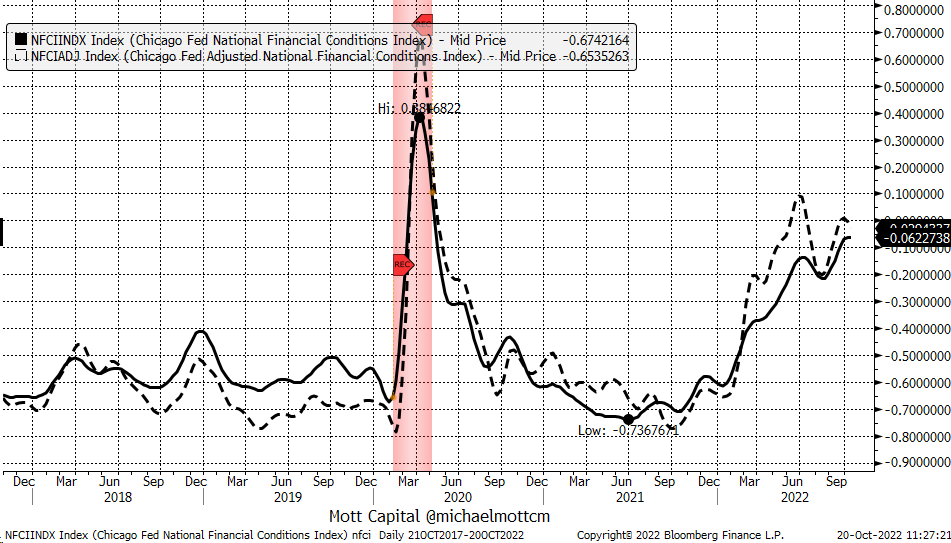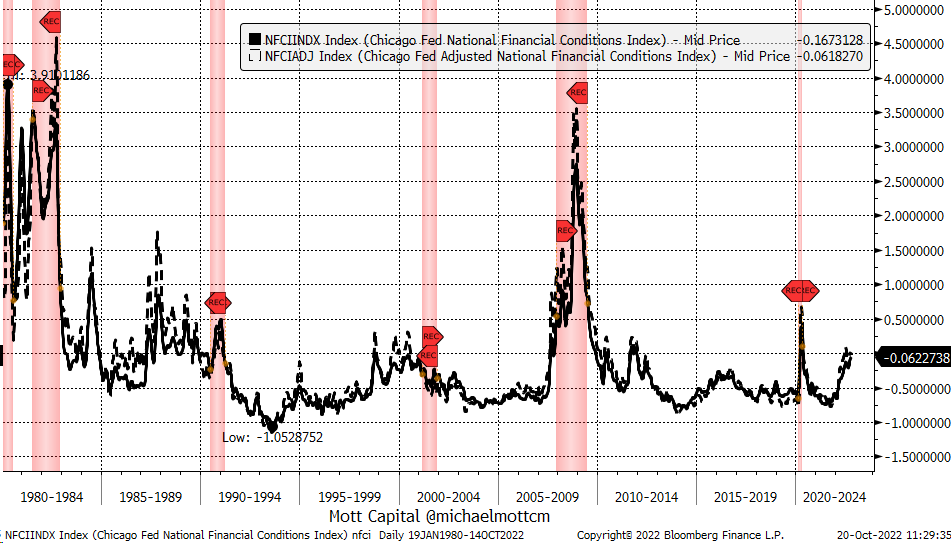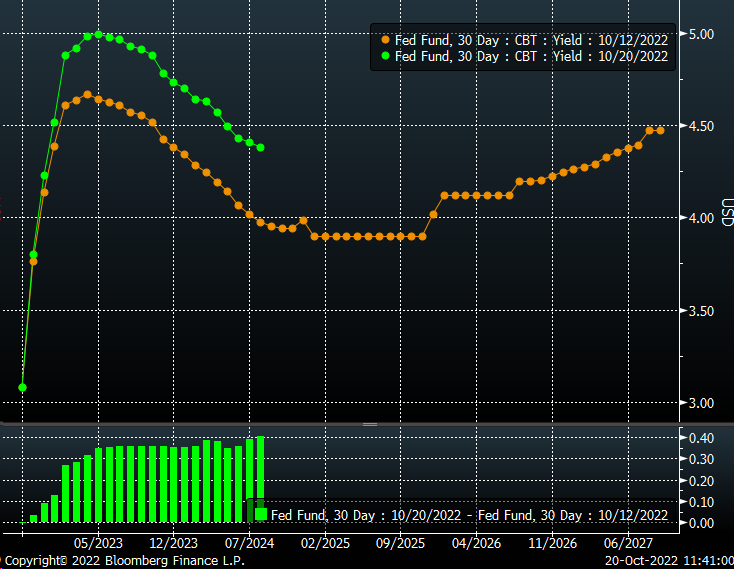Financial conditions have tightened over the past several weeks but have failed to reach restrictive levels, and that would suggest the Fed's job is far from over. The Chicago Fed National Financial Condition Index is a good indicator of current financial conditions. When the value rises, it tends to result in equity prices falling and vice versa. The recent tightening in financial conditions has been a significant reason why stocks have struggled.
But what is most noticeable is that the National Financial Conditions Index and the Adjusted National Financial Conditions Index, while rising dramatically since the Jackson Hole economic symposium, have failed to rise and stay above zero. When the index rises above zero, financial conditions are considered restrictive, and when they are below zero, they are considered loose.

More Tightening Is Needed To Bring Inflation Down
Currently, both values are close to zero but still below zero, suggesting that the transmission of monetary policy from the FOMC has not reached restrictive territory and indicates that financial conditions will need to tighten further to have the desired effect the Fed wants to see to bring the inflation rate down.
For example, in the 1980s, the last time there was a sustained period of high inflation, the NFCI and adjusted NFCI were above 0 for some time, and that would suggest that we are likely to see both measures of financial conditions move above zero now and remain there for some time.

Tight Conditions Weaken Stocks
The bad news is that when financial conditions tighten, it tends to correspond with stock prices falling, which suggests that the lows for the S&P 500 and broader stock market are still not in.

In 2022 it is evident that when financial conditions have tightened, stock prices fall, and when financial conditions ease, stock prices rise. The question is how much conditions need to tighten and how long it will take to bring the inflation rate down. That will be a clue to where this bear market cycle is and where it will likely go. Financial conditions aren't likely to peak until it is clear that the Fed tightening cycle is over, meaning the Fed has stopped raising rates. At this point, it isn't clear when that will be.
More Fed Rate Hikes To Come
Fed Funds Futures are still repricing following the hotter-than-expected CPI report. Currently, the market is pricing at a peak rate of 5% by May 2023. If that turns out to be correct, then the Fed still has much further to lift rates, suggesting that financial conditions still have much further to tighten.

As long as financial conditions tighten further, they will have a big say in where stock prices go. It will not be until those conditions have peaked that a potential stock market bottom is near. But until then, there is probably still more pain ahead.
Disclaimer: Charts used with the permission of Bloomberg Finance LP. This report contains independent commentary to be used for informational and educational purposes only. Michael Kramer is a member and investment adviser representative with Mott Capital Management. Mr. Kramer is not affiliated with this company and does not serve on the board of any related company that issued this stock. All opinions and analyses presented by Michael Kramer in this analysis or market report are solely Michael Kramer's views. Readers should not treat any opinion, viewpoint, or prediction expressed by Michael Kramer as a specific solicitation or recommendation to buy or sell a particular security or follow a particular strategy. Michael Kramer's analyses are based upon information and independent research that he considers reliable, but neither Michael Kramer nor Mott Capital Management guarantees its completeness or accuracy, and it should not be relied upon as such. Michael Kramer is not under any obligation to update or correct any information presented in his analyses. Mr. Kramer's statements, guidance, and opinions are subject to change without notice. Past performance is not indicative of future results. Past performance of an index is not an indication or guarantee of future results. It is not possible to invest directly in an index. Exposure to an asset class represented by an index may be available through investable instruments based on that index. Neither Michael Kramer nor Mott Capital Management guarantees any specific outcome or profit. You should be aware of the real risk of loss in following any strategy or investment commentary presented in this analysis. Strategies or investments discussed may fluctuate in price or value. Investments or strategies mentioned in this analysis may not be suitable for you. This material does not consider your particular investment objectives, financial situation, or needs and is not intended as a recommendation appropriate for you. You must make an independent decision regarding investments or strategies in this analysis. Upon request, the advisor will provide a list of all recommendations made during the past twelve months. Before acting on information in this analysis, you should consider whether it is suitable for your circumstances and strongly consider seeking advice from your own financial or investment adviser to determine the suitability of any investment. Michael Kramer and Mott Capital received compensation for this article.
